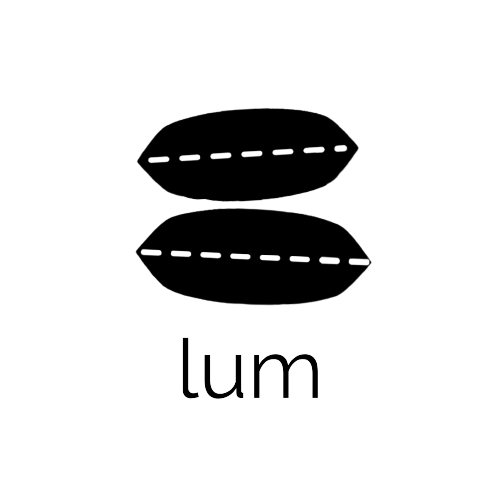I began lum in Autumn 2020. Although I have been sewing and making for many years, it is the first time I have started a business from scratch, and I’ve learnt a lot along the way! Here are a few of the things I’ve picked up in my first few months in business:

Choose your own path
I’d been thinking about starting my own business for a while, but had never managed to settle on the ‘right’ idea, or identify the ‘right’ time. Reading blogs and watching videos about the subject, I found there was lots of conflicting advice. What I eventually realised was that I had the freedom to choose - there might not be a ‘right’ time, but there was the right time for me.
Social media is infinite
Time spent on developing and making products is only part of running a small business: and in the early stages, raising awareness of your existence is equally important. I decided to use Instagram as my primary marketing and social media platform and developed a profile and a launch campaign. But the more time you spend on photographing, creating, writing and interacting on Instagram, the more time you feel you could be spending. With lots of advice to ‘present’ regularly, it can feel like you are missing out when not posting. However, I now prepare my content in regular and concentrated intervals, scheduling posts to come out at different times, and giving me some time off!
Only buy what you need
It’s tempting to invest initially in all the things you think you need for your business. I was lucky in that I already had a sewing machine - the primary investment for any handmade cushion business - but I needed to source material, sundries, packaging and all the little things which make lum possible. Often it’s cheaper to buy things in huge quantities and invest lots of cash upfront, but I couldn’t afford this financially (or in terms of space in my wee flat!) so I concentrated on buying small initial quantities and establishing the demand before buying more.
There will be a first time for everything
I think it probably underestimated the amount of new things I would have to learn how to do. I am already an expert in sewing, but that’s not enough! There will be your first ecommerce website (or platform), your first order, your first customer enquiry, your first wholesale enquiry, your first lost email...and you will figure out how to deal with them all in due course! There are loads of ideas and lots of advice out there from the handmade, craft and small business community, which I found extremely helpful.
Be open to change (and pivot)
When I first started lum, I had a relatively set idea of what I wanted to make and sell. But when the temperature started to drop outdoors, and Covid-19 restrictions meant that we were limited to only socialising outdoors, I had a new idea. I mocked up, tested and launched my zero-waste handwarmers less than two weeks later. They’ve turned out to be one of my most popular products, and spurred lots more future ideas! I'll soon be launching a couple of new product ranges - all themed around comfort and nature - that have only developed over time.
Know your worth
I think this is a tricky one for any handmade business: pricing. I am passionate about ensuring that lum contributes to a socially and environmentally positive economy, and that means choosing high quality materials from ethical suppliers and taking the time to ensure each item is handmade with french seams and concealed zips (some time-intensive methods!). These choices mean that I have to charge a higher price for my products than you can find on the high street - but it is one which reflects a true commitment to sustainability.
Remember why you started
When faced with a difficult choice or a challenging opportunity (and they will come up!), I’ve found it helpful to revisit my motivations for starting lum in the first place. How does this choice inform or contribute to your overall aim? Lum aims to create better habitats, at home and in the wild, and so everything I do must contribute to that aim. Remember this helps to keep me focused, and reminds me of the passion I have for it!
Take a look at lum’s product range. Want to follow along on the journey of lum? Follow us on Instagram, Facebook or subscribe to the newsletter (at the bottom of this page!).

